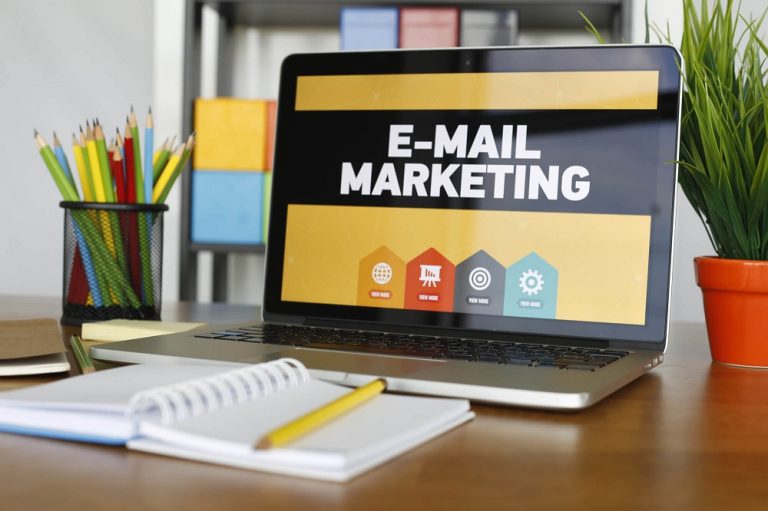Email marketing continues to be one of the most effective channels for engaging customers, driving sales, and nurturing relationships. As businesses strive to maintain relevance in an increasingly competitive landscape, the tools used to manage and optimize email campaigns have evolved dramatically. No longer confined to basic tools for sending out newsletters, today’s email marketing platforms leverage advanced technology, automation, and personalization to create dynamic and impactful campaigns. For companies seeking sustainable growth and a competitive edge, keeping up with the latest email marketing tools is paramount.
In this article, we will explore some of the emerging tools that are being used by top companies to drive successful email marketing strategies. These tools not only enhance productivity but also provide deeper insights into customer behavior, making email marketing more personalized, efficient, and results-driven.
1. Klaviyo: The Power of Data-Driven Automation
Klaviyo is a cutting-edge email marketing tool that focuses on delivering data-driven and highly personalized campaigns. It is widely used by e-commerce businesses and integrates seamlessly with platforms such as Shopify, WooCommerce, and Magento. Klaviyo’s strength lies in its ability to harness customer data to create highly segmented lists and trigger automated email flows based on user actions and behaviors.
Why it matters: One of the key features that set Klaviyo apart is its deep integration with e-commerce platforms, which allows marketers to track user behavior, such as browsing history, past purchases, and abandoned carts. This enables hyper-targeted email campaigns that can significantly improve engagement rates and sales conversions.
Key features:
-
Advanced segmentation based on customer behavior.
-
Pre-built automation workflows for welcome emails, abandoned cart reminders, and post-purchase follow-ups.
-
A/B testing capabilities for optimized subject lines, messaging, and timing.
-
Deep analytics that measure performance in real-time.
Use case: An online fashion retailer might use Klaviyo to send tailored email campaigns promoting discounts on items similar to those customers have previously viewed or purchased, thereby increasing the likelihood of conversion.
2. Moosend: AI-Powered Personalization at Scale
Moosend is a relatively new player in the email marketing space, but it’s quickly gaining traction due to its sophisticated artificial intelligence (AI) capabilities. Designed for businesses of all sizes, Moosend focuses on automating and personalizing email content based on user preferences and behaviors. Its AI-driven features help marketers optimize their campaigns for better engagement and performance.
Why it matters: AI allows businesses to automate tedious tasks such as list segmentation, subject line optimization, and email content customization. This makes Moosend particularly appealing to marketers who want to improve efficiency without sacrificing personalization.
Key features:
-
AI-based recommendations for optimal send times, subject lines, and content.
-
Dynamic email content that adjusts based on user preferences.
-
Advanced automation workflows that trigger based on specific customer actions.
-
Detailed performance analytics and heatmaps to track engagement and ROI.
Use case: A company in the fitness industry might use Moosend’s AI capabilities to send personalized workout tips, nutrition advice, and exclusive offers based on user activity on their website, helping to build a deeper relationship with customers.
3. ActiveCampaign: Comprehensive Marketing Automation
ActiveCampaign has earned a reputation as one of the leading tools for email marketing and automation. It combines email marketing with customer relationship management (CRM), allowing companies to send targeted campaigns based on a customer’s position in the sales funnel. It is particularly useful for businesses that want to manage both email marketing and customer journeys in one unified platform.
Why it matters: ActiveCampaign’s strength lies in its ability to seamlessly integrate email marketing with CRM features. This means that marketers can manage customer interactions, sales processes, and engagement all from one platform. It’s ideal for businesses looking to maintain strong relationships with leads and customers through personalized, automated campaigns.
Key features:
-
Advanced CRM functionalities for lead tracking and segmentation.
-
Behavioral triggers that send personalized emails based on user actions.
-
A/B testing for optimizing email campaigns.
-
In-depth reporting and analytics for measuring campaign success and customer lifetime value.
Use case: A SaaS company might use ActiveCampaign to automatically send onboarding emails, product tips, and renewal reminders based on user engagement, all while tracking interactions through the CRM to ensure that leads are nurtured effectively.
4. Sendinblue: All-in-One Marketing Automation
Sendinblue has gained recognition for offering an all-in-one marketing automation platform that includes email marketing, SMS campaigns, social media management, and more. It is especially popular among small and medium-sized businesses that need an affordable, yet powerful solution for multi-channel marketing.
Why it matters: Sendinblue’s versatility makes it an attractive option for businesses looking to manage email campaigns alongside other forms of communication, such as SMS or social media. This holistic approach ensures a consistent message across multiple channels, which is vital for building brand recognition and improving customer engagement.
Key features:
-
Email automation workflows that are easy to set up and manage.
-
SMS marketing capabilities for sending messages to customers’ mobile phones.
-
Advanced segmentation tools to tailor email content to different audience groups.
-
A drag-and-drop email builder for creating professional emails without coding.
Use case: A local restaurant might use Sendinblue to send personalized promotions, loyalty program updates, and event invitations via both email and SMS, creating a seamless multi-channel customer experience.
5. Benchmark Email: User-Friendly Email Campaign Builder
Benchmark Email is known for its ease of use and intuitive drag-and-drop interface, making it a great choice for companies with limited technical expertise. The platform provides a robust set of features designed to help businesses create, send, and track email campaigns without the steep learning curve that many other tools require.
Why it matters: For businesses that are just getting started with email marketing or those that want a simpler solution, Benchmark Email provides all the necessary tools in an easy-to-use package. Its simplicity does not sacrifice functionality, making it a great entry-level tool with the potential to scale.
Key features:
-
Drag-and-drop email editor for creating professional emails without coding knowledge.
-
Powerful automation workflows that trigger emails based on customer behavior.
-
Real-time reporting that allows you to track campaign performance and make adjustments as needed.
-
A comprehensive email list management system for segmenting subscribers.
Use case: A boutique e-commerce shop might use Benchmark Email to design and automate welcome emails for new subscribers and send seasonal promotions, all while tracking how each campaign performs.
6. ConvertKit: A Favorite Among Creators and Influencers
ConvertKit has become a go-to platform for content creators, bloggers, and influencers, thanks to its simple, yet powerful tools for building relationships with an audience. The platform allows users to easily automate email sequences, segment subscribers, and track engagement, making it an ideal choice for creators who need a straightforward way to manage their email marketing.
Why it matters: ConvertKit’s focus on simplicity and ease of use, combined with robust automation features, makes it ideal for those looking to build and nurture a loyal community through email. Its user-friendly interface and integration with popular platforms like WordPress and Teachable make it a great choice for content creators who want to focus on what they do best: creating content.
Key features:
-
Visual email sequence builder for creating automated email funnels.
-
Tag-based segmentation to personalize content for different subscriber groups.
-
Simple yet effective landing page builder to grow your email list.
-
A/B testing to optimize subject lines, emails, and calls to action.
Use case: A fitness influencer might use ConvertKit to send a series of automated emails that provide fitness tips, offer exclusive discounts on workout plans, and encourage engagement with their social media profiles.
7. Drip: Advanced E-commerce Email Marketing
Drip is an advanced email marketing automation platform designed specifically for e-commerce businesses. Known for its powerful workflows, segmentation, and personalized email capabilities, Drip allows businesses to create highly targeted campaigns that increase customer retention and drive more sales.
Why it matters: Drip’s strength lies in its ability to integrate seamlessly with e-commerce platforms and create sophisticated email marketing workflows. It is especially effective at building automated sales funnels, nurturing leads, and recovering abandoned carts.
Key features:
-
Advanced segmentation and dynamic content for personalized emails.
-
Workflow automation to create complex email journeys based on customer behavior.
-
Detailed analytics and reporting for optimizing campaign performance.
-
Integrations with popular e-commerce platforms like Shopify, WooCommerce, and BigCommerce.
Use case: A beauty retailer might use Drip to send personalized product recommendations, VIP offers, and re-engagement emails based on customers’ past purchases and browsing behavior, maximizing customer lifetime value.
Conclusion
As the digital landscape continues to evolve, so too must the tools used for email marketing. Emerging platforms like Klaviyo, Moosend, ActiveCampaign, and others provide businesses with the ability to automate, personalize, and optimize their email campaigns at scale. Whether through AI-driven insights, CRM integration, or multi-channel capabilities, these tools allow companies to engage their audiences more effectively and drive sustainable growth.
To stay competitive, businesses must not only embrace these new tools but also continually evaluate their email marketing strategies to ensure they are leveraging the full potential of these advanced solutions. The right email marketing tool can make all the difference, transforming a basic campaign into a powerful engine for customer engagement and long-term business success.


